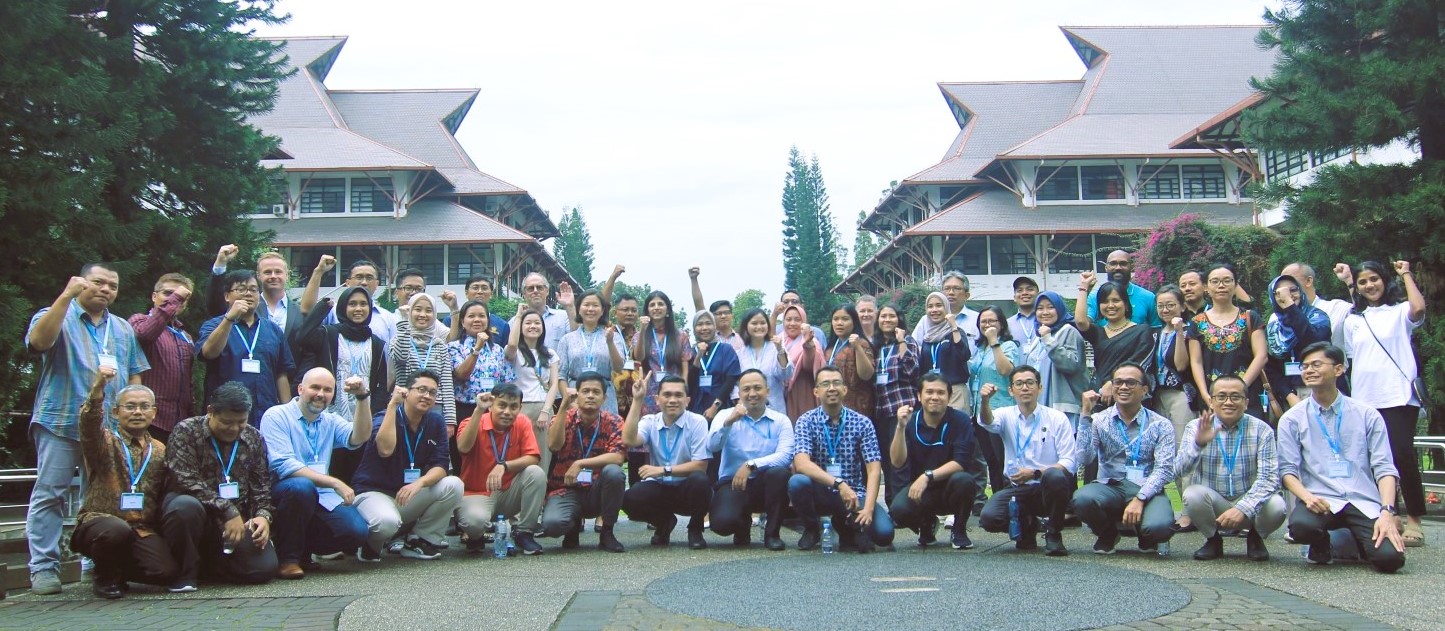[Recap] Executive Education Program on Disaster Risk Finance for Indonesia: Milestone Achievement in Strengthening Indonesia's Resilience

Indonesia frequently faces natural disasters such as earthquakes, tsunamis, and volcanic eruptions, to the extent that it is often referred to as the “supermarket of disasters”. This necessitates robust disaster risk finance (DRF) strategies to mitigate the financial impacts of these events and enhance resilience. The “Executive Education Program on Disaster Risk Finance for Indonesia”, held from March 4 to 7, 2024, at the historic Institut Teknologi Bandung (ITB), Indonesia, marked a key milestone as the first-ever executive education program specifically tailored to a country's disaster risk finance (DRF) strategy. It was also the first to be predominantly delivered in Bahasa Indonesia. The event, designed and delivered jointly by the World Bank (supported by the Global Shield Financing Facility) and ITB, aimed to enhance the understanding and implementation of DRF tailored to Indonesia's unique landscape and challenges.
Day 1: Fundamentals of DRF and Challenges and Actions in Indonesia
The program commenced with opening remarks from Yogi Rahmayanti (Director of the Center for Regional and Bilateral Policy at the Fiscal Policy Agency, Ministry of Finance, Indonesia), Prof Ir. Ridwan Sutriadi (Director of Non-Regular Education, ITB), and Cecile Niang (Practice Manager for East Asia and Pacific, Finance, Competitiveness & Innovation Global Practice, World Bank Group). The sessions "Fundamentals of Disaster Risk Finance" and "Challenges and Actions in DRF in Indonesia" gave participants a solid understanding of the importance of DRF and the specific challenges faced by Indonesia. Next up was "Master the Disaster", a gamified simulation, incorporating an interactive exercise to enhance participants' grasp of the aims and breadth of DRF, and to familiarize them with various financial tools. The day concluded with a detailed exploration of the different types of DRF Instruments, emphasizing Indonesia’s strategic approach, through a roundtable discussion.
Day 2: Protection of Government (Budget)
The second day focused on the policy and regulatory frameworks essential for implementing DRF instruments in Indonesia. Participants then delved into global experiences with DRF Funds, with a focus on the Turkish Catastrophe Insurance Pool and the Earthquake Commission in New Zealand. The afternoon sessions explored the specifics of the Pooling Fund Bencana and CAT Bonds, culminating in a Stakeholder Mapping session designed to strategize engagement with key DRF stakeholders.
Day 3: Protection of Lives, Livelihoods, Jobs
Day 3 emphasized the protection of lives, livelihoods, and jobs, starting with an overview session on DRF for small and medium enterprises (SMEs), agriculture, and adaptive social protection (ASP). The DRF for SMEs session provided key insights into the difficulties faced by the Indonesian economy in recovering from natural disasters, and how DRF is essential in such situations. Participants were then split into elective sessions focusing on “DRF for Agriculture (with a deep dive into India’s Pradhan Mantri Fasal Bima Yojana scheme)” and “DRF for ASP”, providing tailored insights and best practices for each area. This was followed by an impromptu walking tour of the scenic ITB campus that was thoroughly enjoyed by everyone.
Day 4: Protection of Private and Public Assets
The final day, held at ITB’s iconic West Hall, centred around the protection of public and private assets, and the role of data and analytics in DRF. The program concluded with a closing ceremony that was presided over by Prof. Reini Wirahadikusumah, Ph.D., the first female rector of ITB. In her closing remarks, Sumati Rajput (Senior Financial Sector Specialist, World Bank Group) highlighted the following key takeaways from the program:
- Collaborative Approach: Effective DRF requires collaboration across various government ministries and units.
- Clear Objectives: It is important to define clear DRF priorities and have a strong regulatory framework for success.
- Continuous Learning: Adaptation and improvement through trial-and-error and ongoing monitoring are essential.
- Ongoing Engagement: Continual knowledge sharing and capacity building in DRF are key for long-term success.
Participants left the program with not only a deeper understanding of DRF but also practical insights and strategies applicable to the Indonesian context. The success of this program demonstrates the importance of targeted education and collaboration in advancing DRF strategies.
Participant feedback underscored the training's efficacy, as 95% of the participants found the training to be relevant to their operations. All participants said they would recommend the program to their colleagues.
To learn more about Disaster Risk Finance, please visit Financial Protection Forum.
Join the Disaster Risk Finance Community of Practice and the Disaster Risk Finance Community on LinkedIn.
For more information, please write to Sumati Rajput (srajput@worldbank.org) or drfip@worldbankgroup.org